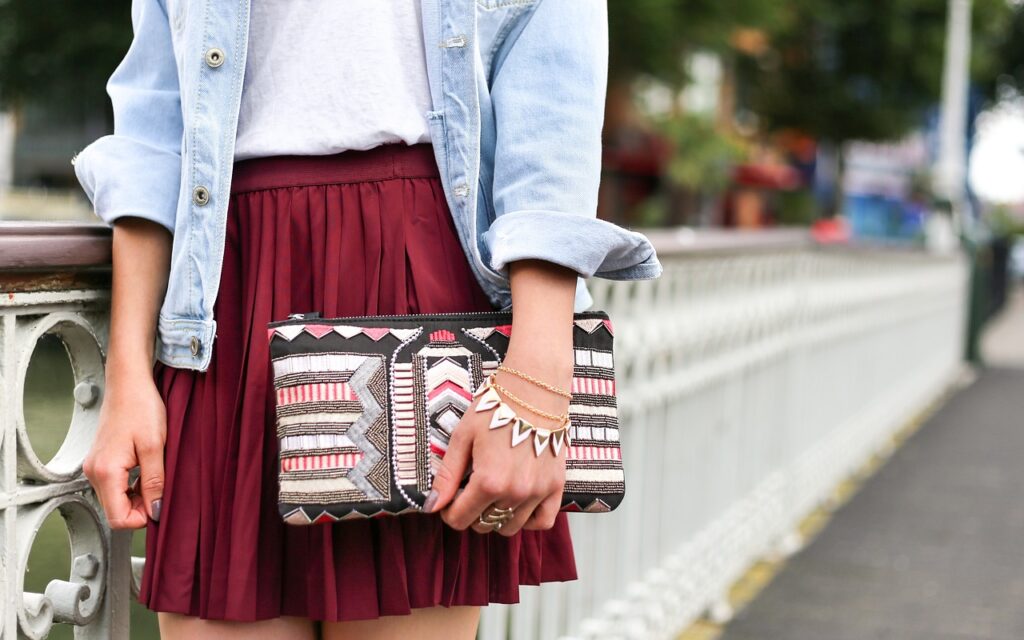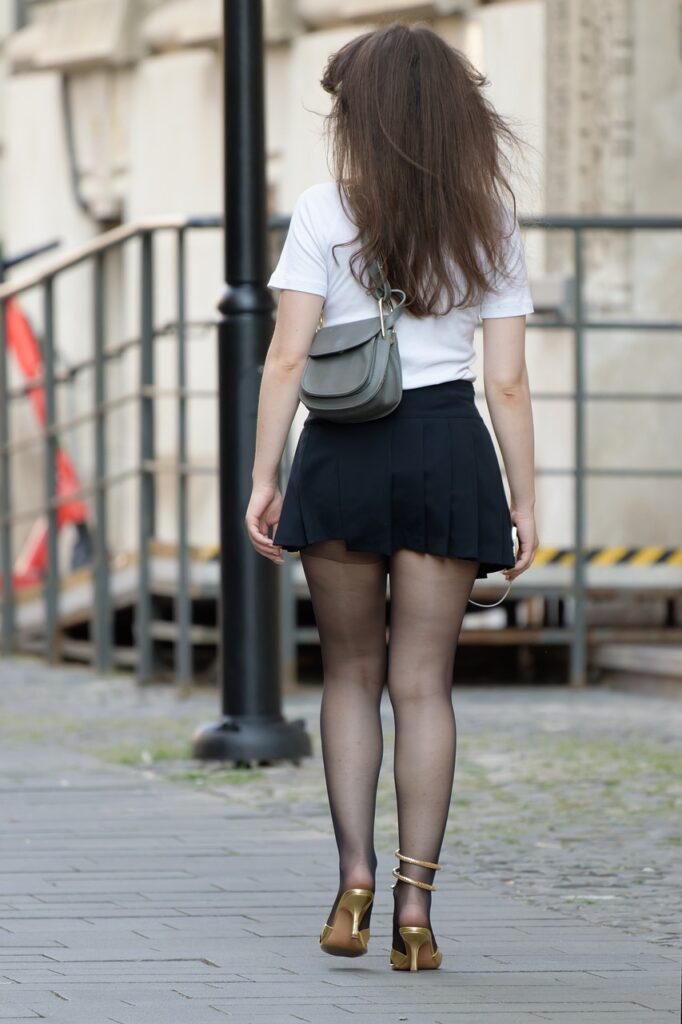Introduction
The Evolution and Cultural Significance of Skirts: A Comprehensive Overview Skirts are one of the oldest and most versatile garments in fashion history. From ancient civilizations to modern runways, skirts have continually evolved in style, fabric, and cultural significance. This iconic piece of clothing, worn predominantly by women but historically by men as well, A Comprehensive Overview has transcended its functional origins to become a powerful symbol of femininity, rebellion, and social status. This article explores the history of skirts, their cultural implications, and their ongoing relevance in contemporary fashion.
The Historical Journey of Skirts
1. Ancient Beginnings
Skirts date back to ancient civilizations, where they were a unisex garment worn by both men and women. In ancient Egypt, for instance, men wore simple linen skirts called “shendyt,” while women wore longer, more elaborate versions. These early skirts were practical, providing comfort in the hot climate while allowing freedom of movement. Similarly, in ancient Mesopotamia, the “kaunakes” was a type of skirt worn by both sexes, often made from wool and adorned with tassels.
In ancient Rome and Greece, skirts took on more structured forms. Roman men wore “tunics,” which were knee-length skirts tied at the waist, while Greek women donned “peplos” and “chitons,” which were essentially long, flowing skirts fastened with pins at the shoulders. These garments not only served practical purposes but also reflected the wearer’s social status and wealth, with more elaborate and decorated skirts indicating higher social standing.

2. Medieval to Renaissance Eras
During the medieval period, skirts became more distinctly associated with women. Men’s fashion began to favor trousers and hose, while women continued to wear long skirts, often layered with petticoats. The Renaissance era saw the introduction of the farthingale, a hooped skirt structure that created a wide, conical shape. This period was characterized by elaborate, voluminous skirts that showcased wealth and status. The skirt was no longer just a piece of clothing; it was a statement. The Evolution and Cultural Significance of Skirts: A Comprehensive Overview
As fashion evolved through the 17th and 18th centuries, skirts became increasingly elaborate. The introduction of the crinoline in the mid-19th century marked another significant development. This undergarment, made of horsehair and steel, gave skirts an even wider and more exaggerated silhouette, which was popular among the European elite. However, this fashion also sparked debates about the practicality and safety of such garments, as crinolines were known to catch fire and cause accidents.
3. The 20th Century: A Revolution in Skirt Fashion
The Evolution and Cultural Significance of Skirts The 20th century brought about radical changes in skirt fashion, reflecting the broader social and cultural shifts of the time. The early 1900s saw the decline of restrictive garments like the crinoline and corset, giving way to more practical and comfortable styles. The introduction of the “hobble skirt” by French designer Paul Poiret, which was narrow at the hem and restricted movement, was a brief trend but demonstrated the evolving nature of fashion.
The 1920s marked a significant turning point with the rise of the “flapper” style. Shorter hemlines became a symbol of women’s liberation and independence, challenging traditional notions of femininity and propriety. The flapper skirt, often worn just below the knee, was a radical departure from the long, cumbersome skirts of previous generations and became a symbol of the modern woman.
In the 1940s and 1950s, skirts continued to evolve, reflecting the changing roles of women in society. During World War II, fabric rationing led to the popularity of shorter, simpler skirts. The post-war era saw the rise of the “New Look” by Christian Dior, characterized by full, mid-calf-length skirts that emphasized a return to traditional femininity.
4. The 1960s and Beyond: Mini Skirts and Cultural Shifts
The 1960s brought about one of the most iconic and controversial fashion trends in skirt history: the mini skirt. Popularized by British designer Mary Quant, the mini skirt became a symbol of youth culture, rebellion, and sexual liberation. This bold fashion statement challenged societal norms and was met with both enthusiasm and backlash. The mini skirt’s impact was profound, influencing fashion trends for decades to come.
The 1970s and 1980s saw the emergence of various skirt styles, from the bohemian maxi skirt to the punk-inspired leather mini. These decades were marked by a diversification of fashion, with skirts being worn in a variety of lengths, fabrics, and styles. The 1990s brought the rise of grunge fashion, where skirts were often paired with combat boots and oversized flannel shirts, reflecting a more rebellious and anti-establishment attitude.

5. The 21st Century: Skirts in Modern Fashion
In the 21st century, skirts continue to be a versatile and essential part of women’s wardrobes. The fashion industry has seen a return to classic styles, with designers reinterpreting vintage silhouettes for modern tastes. The rise of fast fashion has made skirts more accessible than ever, with a wide range of styles available at affordable prices.
Today, skirts are worn in a variety of contexts, from casual everyday wear to formal occasions. The midi skirt, which falls below the knee and is often pleated or A-line, has become particularly popular in recent years. The pencil skirt, a sleek and professional option, remains a staple in corporate environments. Meanwhile, the maxi skirt continues to be a favorite for its comfort and bohemian appeal.
Cultural Significance of Skirts
1. Skirts as a Symbol of Femininity
The Evolution and Cultural Significance of Skirts Throughout history, skirts have been closely associated with femininity. This association is deeply rooted in cultural and social norms, where skirts have often been seen as a marker of a woman’s gender and role in society. The flowing, graceful silhouette of a skirt is often linked to traditional ideals of beauty and womanhood.
In many cultures, the act of wearing a skirt is seen as a rite of passage, signifying a girl’s transition into womanhood. This cultural symbolism is evident in various coming-of-age ceremonies and traditions worldwide, where young women don skirts or dresses as part of their initiation into adulthood.

2. Skirts and Gender Identity
While skirts are predominantly associated with women in modern society, their history as a unisex garment is important to acknowledge. In recent years, there has been a growing movement challenging the gender binary in fashion. Designers and activists are advocating for the normalization of skirts as a gender-neutral garment, encouraging men and non-binary individuals to embrace skirt-wearing without fear of judgment or stigma.
This shift is part of a broader trend toward more inclusive and diverse representations of gender in fashion. By challenging traditional norms and encouraging self-expression, skirts are becoming a powerful tool for exploring and expressing gender identity.
3. Skirts in Politics and Social Movements
The Evolution and Cultural Significance of Skirts Skirts have also played a significant role in political and social movements. In the 19th century, the Rational Dress Movement advocated for women’s right to wear more practical and comfortable clothing, challenging the restrictive and dangerous fashion norms of the time. Skirts, particularly shorter and more functional styles, became a symbol of this movement toward greater freedom and autonomy for women.
In the 20th century, the mini skirt became a symbol of the feminist movement, representing women’s liberation and control over their bodies. The choice to wear a mini skirt was seen as an act of defiance against societal expectations and a statement of empowerment.
More recently, skirts have been used in various social and political protests, such as the “SlutWalk” movement, where participants wear skirts or dresses to challenge victim-blaming attitudes toward sexual assault. These movements highlight the powerful symbolism of skirts in challenging oppressive norms and advocating for social change.

The Future of Skirts in Fashion
As fashion continues to evolve, skirts remain a versatile and enduring garment. The rise of sustainable fashion is influencing the way skirts are designed and produced, with an emphasis on ethical practices and eco-friendly materials. Designers are increasingly focusing on creating timeless, high-quality pieces that can be worn and cherished for years, rather than disposable trends.
In addition, the ongoing conversation about gender and identity in fashion is likely to further impact the future of skirts. As society becomes more accepting of diverse expressions of gender, skirts may continue to be embraced by a broader audience, breaking down traditional gender norms and expanding the possibilities of self-expression.
The Evolution and Cultural Significance of Skirts The digital age is also transforming the way skirts are marketed and consumed. Social media platforms like Instagram and TikTok have become powerful tools for fashion influencers and brands to showcase their latest designs and connect with consumers. This has led to the rapid spread of trends and a more globalized fashion industry, where styles from different cultures and regions can influence each other.
Conclusion
The skirt, a garment with a rich and varied history, continues to be a significant and evolving element of fashion. From its ancient origins to its role in modern social movements, the skirt has transcended its practical function to become a powerful symbol of femininity, identity, and cultural expression. As fashion progresses into the future, skirts will undoubtedly continue to adapt, reflecting the changing values and aspirations of society. Whether as a statement of style, a marker of cultural identity, or a tool for challenging norms, the skirt remains a timeless and versatile garment that will continue to shape the world of fashion for generations to come.
